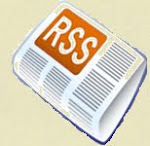
I’ve talked a little already about under- standing energy usage in the house- hold and how lowering such translates directly to my pocket book as well as a good feeling that the local power plant is burning less coal because of moi.
What about my office?
What about your office?
Replacing appliances, equipment, changing insulation, and adding south facing windows are all pretty expensive investments to make to your home or office. In any quest to be ‘less bad’ in regard to sustainability, starting simple is the key.
In an economy where everyone is perhaps a little more desperate for customers, if you could also market yourself as more ‘green’ and thereby more professionally ‘cost conscious’ wouldn’t you be more competitive?
It’s hip. It’s responsible. It’s about cutting overhead.
Wouldn’t cutting your electric bills make your margins just a tweensy bit bigger? For me when it comes to greening your home or office, there are four areas to target: energy use, waste reduction, air quality and water use.
Energy use
My office is easy because there are so few of us (and by few, I mean two). To save energy we keep the printer/copier off until we need it and strive to only print in the afternoon. We also turn off the coffee maker to stop the power company from sipping energy while we’re sipping the fruits of our brewing genius. Did you know that across the US, the cost of powering appliances when they are turned off adds up to over $1 billion a year? I’m talking about the digital clocks and internal low power sipping activity going on with these appliances of course.
We’ve installed CFLs of course but find much better peace with natural light. By the way, CFLs that emit harsh blue lighting should be banned in my opinion. Not only are they hard on the eyes but they give CFLs a bad name. There are plenty of warm and low Wattage CFLs on the market that incorporating these into your office may not even be noticed –except by you and your lower energy bills. I evaluated my home lighting usage and I think you’ll be surprised how much I save by converting to (warm light) CFLs; see spreadsheets here.
Waste reduction
The biggest waste from my office is paper. Whether its scratch paper I’m ideating on or misprints. Whether it’s for me or a customer, I double side print when ever possible. It saves paper and frankly I think the customer notices I’m saving paper and ultimately costs to him.
Nothing beats a face to face meeting. Nothing. I do however have clients that are far away and while we meet when necessary I try to keep my availability open through IM, Skype, and video conferencing even if it’s just to catch up and even if this colleague is located ten miles away.
Air Quality
I’m perhaps lucky in that my office has windows that open and wood floors that are both easily cleaned and not emitting toxic carpet fumes. Choosing the right cleansers makes a difference in that off gassing not only smells bad but well, is just that: off gassing – chemicals wafting through the air. To read more from experts try both these Canadian and US government reports.
Water Use
An office certainly has a leg up over a manufacturing facility and understanding your processes will go a long way in reducing potable water use and potentially implementing reuse of process water back into your operation or part of your heating & cooling system. Read more about what others are doing here.
I’d like to learn what you do to save on energy as well as how you look at the whole energy use verses CO2 picture.
I’m keenly interested to learn about changes you’ve made in both your office and manufacturing facilities to conserve and how these changes have affected your colleagues (if at all).


No comments:
Post a Comment
I'm very interested in what you have to say. Thanks for joining the conversation! To contact me directly, please write to: jennifer AT werthexpertise DOT com